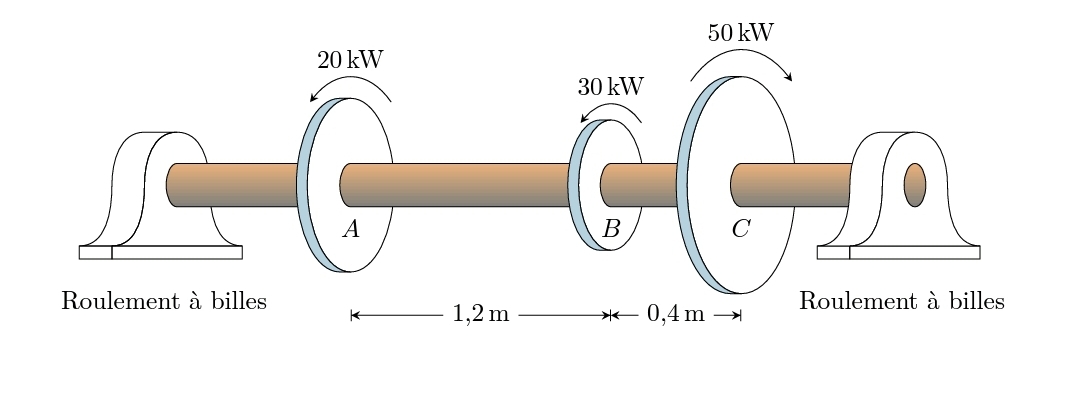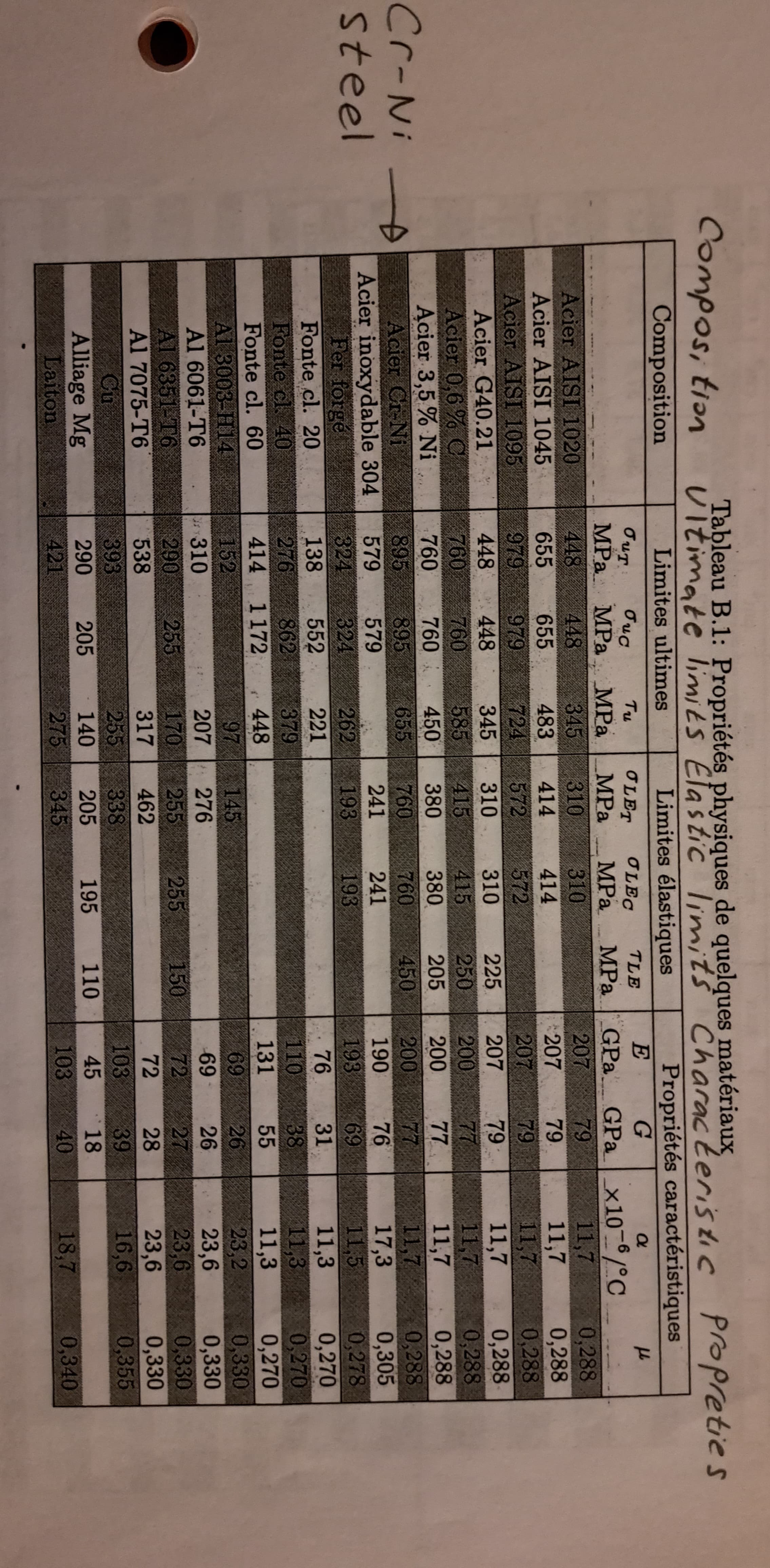A motor (located at C) provides 50kW of power which is then used by pulleys A and B. When the motor is running, the transmission shaft (which is made of Cr-Ni steel and has a diameter of 5cm) starts rotating at a speed of 200 rpm. 1) Find the moment of force at pulleys A, B and C. 2) Find the torque in each section (between the pulleys). 3) What is the safety factor of the driveshaft on the ultimate limit?
A motor (located at C) provides 50kW of power which is then used by pulleys A and B. When the motor is running, the transmission shaft (which is made of Cr-Ni steel and has a diameter of 5cm) starts rotating at a speed of 200 rpm. 1) Find the moment of force at pulleys A, B and C. 2) Find the torque in each section (between the pulleys). 3) What is the safety factor of the driveshaft on the ultimate limit?
Refrigeration and Air Conditioning Technology (MindTap Course List)
8th Edition
ISBN:9781305578296
Author:John Tomczyk, Eugene Silberstein, Bill Whitman, Bill Johnson
Publisher:John Tomczyk, Eugene Silberstein, Bill Whitman, Bill Johnson
Chapter2: Matter And Energy
Section: Chapter Questions
Problem 30RQ: A gas is compressed inside a compressor's cylinder. When the piston is at its bottom dead center,...
Related questions
Question
A motor (located at C) provides 50kW of power which is then used by pulleys A and B. When the motor is running, the transmission shaft (which is made of Cr-Ni steel and has a diameter of 5cm) starts rotating at a speed of 200 rpm.
1) Find the moment of force at pulleys A, B and C.
2) Find the torque in each section (between the pulleys).
3) What is the safety factor of the driveshaft on the ultimate limit?

Transcribed Image Text:Roulement à billes
20 kW
A
1,2 m
50 kW
30 kW
o
B
*
0,4 m →
A
Roulement à billes

Transcribed Image Text:Cr-Ni
steel
Compos, tion
Composition
A
Acier AISI 1020
Acier AISI 1045
Acier AISI 1095
Acier G40.21
Acier 0,6% C
Acier 3,5% Ni
Acier Cr-Ni
Tableau B.1: Propriétés physiques de quelques matériaux
Ultimate limits Elastic limits Characteristic propreties
Limites ultimes
Limites élastiques
Acier inoxydable 304
Fer forgé
Fonte cl. 20
Fonte cl. 40
Fonte cl. 60
Al 3003-H14
Al 6061-T6
Al 6351-T6
Al 7075-T6
Cu
Alliage Mg
Laiton
JUT
συc
MPa MPa
448
448
655
655
979
979
448
448
760
760
760
760*
895
895
579
579
324
324
138
276
414
310
290
538
393
290
421
552
862
1172
255
205
Tu
MPa
MPa
345
310
483
414
724 572
345
585
450
262
221
379
448
OLET OLEC
255
140
275
310
415
380
760
241
193
97
145
207
276
170 255
317
462
TLE
MPa MPa
338
205
345
310
414
572
310
415
380
760
241
193
255
195
225
250
205
450
150
110
Propriétés caractéristiques
G
E
GPa GPa x10-6/°C
a
207
79
207
79
207
79
207
200
200
200
190
193
76
110
131
69
69
72
72
103
45
103
79
77
77
77
76
69
31
38
55
26
26
27
28
39
18
40
11,7
11,7
11,7
11,7
11,7
11,7
11,7
17,3
11,5
11,3
11,3
11,3
23,2
23,6
23,6
23,6
16,6
18,7
fl
0,288
0,288
0,288
0,288
0,288
0,288
0,288
0,305
0,278
0,270
0,270
0,270
0,330
0,330
0,330
0,330
0,355
0,340
Expert Solution
This question has been solved!
Explore an expertly crafted, step-by-step solution for a thorough understanding of key concepts.
This is a popular solution!
Trending now
This is a popular solution!
Step by step
Solved in 3 steps with 1 images

Follow-up Questions
Read through expert solutions to related follow-up questions below.
Follow-up Question
Can you give a more detailled explanation for part C and answer to the following question please:
What is the twist angle (in degrees) of pulley A with respect to pulley C?
Solution
Knowledge Booster
Learn more about
Need a deep-dive on the concept behind this application? Look no further. Learn more about this topic, mechanical-engineering and related others by exploring similar questions and additional content below.Recommended textbooks for you

Refrigeration and Air Conditioning Technology (Mi…
Mechanical Engineering
ISBN:
9781305578296
Author:
John Tomczyk, Eugene Silberstein, Bill Whitman, Bill Johnson
Publisher:
Cengage Learning

Refrigeration and Air Conditioning Technology (Mi…
Mechanical Engineering
ISBN:
9781305578296
Author:
John Tomczyk, Eugene Silberstein, Bill Whitman, Bill Johnson
Publisher:
Cengage Learning